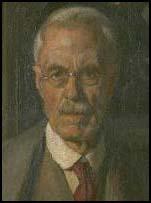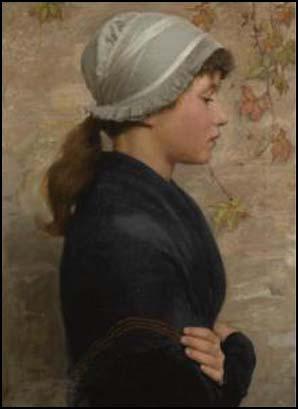Frederick Brown

Frederick Brown, the third child and second son of the seven children of William Brown and his wife, Susan Brewster, was born in Chelmsford on 14th March 1851. His father was an artist who did armorial painting on carriages.
Brown was educated at King Edward VI Grammar School and in 1868 entered the National Art Training School (later the Royal College of Art), South Kensington, to study design. During this period he was influenced by the teaching of Edward Poynter and Alphonse Legros.
In 1877 Brown was appointed head of the Westminster School of Art, at that time an evening class for working men, held at the Royal Architectural Museum in Tufton Street. In 1883 he spent a few months at the Académie Julian, where he became aware of the work of Jules Bastien-Lepage. On his return to London Brown began to reform the teaching of art, and by the end of the 1880s he was considered to be the head of the most progressive art school in the country. Among his pupils were Aubrey Beardsley and Henry Tonks.

Brown was one of the founders of the New English Art Club in 1886, a group of British artists who felt their work was neglected by the Royal Academy. Brown drew up the constitution, sat on all the committees and juries, and encouraged his Slade students to exhibit there. Around 50 members took part in the inaugural exhibition held at the Marlborough Gallery in April, 1886. Early exhibitors included George Clausen, John Singer Sargent, Colin Gill, Philip Wilson Steer, Walter Sickert and James Whistler.
In 1892 Brown succeeded Alphonse Legros as professor of fine art Slade Art School. According to Anne Pimlott Baker: "Continuing the teaching and liberal outlook of Poynter and Legros, he (Brown) built up the school of drawing, and tried to develop the individuality of his pupils, while encouraging them to study form by means of an analytical rather than an imitative approach to draughtsmanship, returning to the methods of masters such as Ingres. He attracted a strong teaching staff, establishing the principle that all teachers should be practising artists."
Brown convinced Henry Tonks to give up medicine and become one of its teachers. Tonks' biographer, Lynda Morris, has argued: "Tonks used his anatomical knowledge to teach life drawing as a swift and intelligent activity. He referred his students to old master drawings at the British Museum and taught his pupils to draw the model at the size it was seen, measured at arm's length (sight size), which enabled them continually to correct the drawing for themselves, against a physical object." Brown also recruited his friend, Philip Wilson Steer, to the staff.

Paintings by Brown included Waiting for the Boat (1880), Peasant Fare (1883), An Impromptu Dance (1883), Rural England (1885), Hard Times (1886), Little Miss Prim (1886), The Storm (1914), Self-Portrait (1932), The Ivy Arch (1933) and The Garden (1937).
Students who studied under Brown include Augustus John, Gwen John, William Orpen, Paul Nash, Wyndham Lewis, Dora Carrington, Edith Craig, Dorothy Brett, Mark Gertler, Christopher Nevinson, Stanley Spencer, John S. Currie, Maxwell Gordon Lightfoot, Edward Wadsworth, Adrian Allinson, Rudolph Ihlee, Spencer Gore, Jacob Epstein, David Bomberg, Michel Salaman, Edna Waugh, Herbert Barnard Everett, Albert Rothenstein, Ambrose McEvoy, Ursula Tyrwhitt, Ida Nettleship and Gwen Salmond.
Frederick Brown died, unmarried, in the Richmond Royal Hospital on 8th January 1941.
Primary Sources
(1) David Boyd Haycock, A Crisis of Brilliance (2009)
Henry Tonks... was inspired to become an artist by reading the life of a Victorian artist, Randolph Caldecott, who progressed from a Manchester bank clerk to become an artist and illustrator in London. Thus in 1888, the same year he was appointed Senior Medical Officer at London's Royal Free Hospital, Tonks began studying part-time with Fred Brown at the Westminster Art School. Brown was so impressed by Tonks's draughtsmanship and dedication that when he was offered the Slade Professorship he invited Tonks to become his drawing master. Tonks's father "expressed his extreme displeasure" at his son taking the position and abandoning his medical career. But Tonks believed he owed to Brown "the great happiness of my life."
